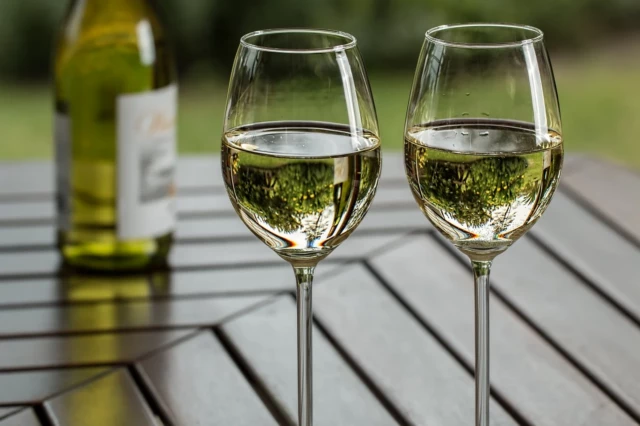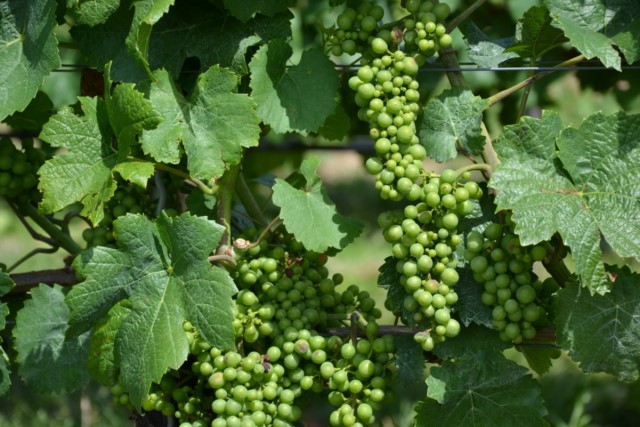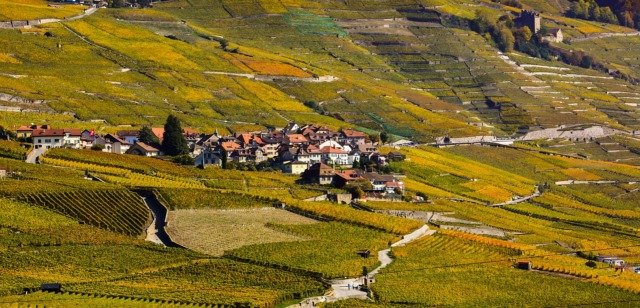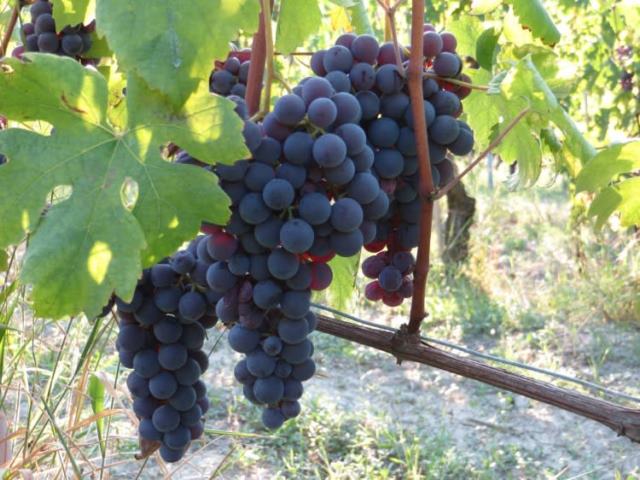mar, Nov 2nd 2021

A white wine, Petite Arvine, is considered one of Switzerland’s finest offerings.
Across the 148 sq km of land taken up by vineyards, there are more than 200 Swiss grape varieties. Given that the climate, soil, and topography of each vineyard is unique, all the wines produced in Switzerland are by definition classified as “AOC” (Appellation d’origine contrôlée). This label means that the Swiss wines are specific to the growing conditions (i.e. the terroir), as well as the geographic area.
Compared to other wine producing nations, Switzerland is tiny. But yet, the Swiss produce no less than 100 million liters of wine per year. The reason why this fact is not very widely known is simple: most of the wine produced here is consumed domestically. Only one percent of Swiss wine is ever exported, and the main recipient is Germany.
Or as a canny winemaker once told me: the Swiss like their wines too much; they would rather drink them than export them.
The two most popular Swiss grape varieties are Chasselas for the white wine (27%), and Pinot Noir for red wines (29%). In Switzerland, you can also find other well-known varieties such as Gamay, Merlot, Humagne Rouge, Arvine, Savagnin Blanc, Gamaret, Gamaret, Garanoir, and Pinot Gris.

The highest altitude vineyard in Switzerland is found at 1,150 meters.
Among the most popular reds, we find Pinot Noir (from all regions), Gamay (from Geneva and Vaud), and Merlot (from Ticino).
And here’s an interesting fact about Swiss wine production: 51 percent of Switzerland’s wine production is white. Could it be because it goes so well with fondue and raclette, the Swiss national dishes?
There are six regions in Switzerland where grapes are harvested. In order of wine production, they are: Valais (33%), Vaud (25%), the German-speaking cantons (19%), Geneva (10%), Ticino (7%), and the Three Lakes region (5%).
Due to the steep inclines of some of the landscapes in Vaud, Valais, and Geneva, the grapes have to be harvest by hand. As far as working tools, wine-growers in these parts will sometimes use a helicopter or a small monorail in order to transport large grape quantities.
The Valais claims the highest vineyard in Switzerland, as well as in all of Europe! Visperterminen is located at a staggering altitude of 1150 meters above sea.
But Valais holds yet another record: Saillon is the smallest vineyard in the world. And as if this was not interesting enough, it has been in the ownership of the Dalai Lama since 1999. The vineyard produces only few bottles of wines per year, and the profit is donated to help underprivileged children.
If you have ever visited the canton of Vaud, you most likely lost your breath to the spectacular views of the Lavaux. In 2007, the wine-growing region along Lake Geneva was declared a UNESCO World Heritage site. It represents a type of harmony between natural landscapes and the work of man that is unique in this world.

Grapes have been grown in Switzerland since Roman times. In the Valais region, grapes enjoy the most sun in Switzerland.
The history of this cultural asset can be traced back to the 12th century. This is when Cistercian monks planted the Dézaley vineyard, now the canton’s most famous, on the slopes along the lake. It would be an impossible feat to build a vast wine-growing landscape such as the Lavaux in this century. Here in the birthplace of Swiss viniculture, there are still about 150 wine producers.
The Vaud region claims to be special in that it has not just one sun, but three! In this microclimate, the predominantly Chasselas grapes are warmed up by three different sources altogether: the sun in the sky, the heat coming from the walled terraces, and finally the reflection off the lake.
The heritage ‘’Pot Vaudois’’ was created in 1820 by local glassmakers, holding 1.4 liters of wine. This tradition was lost due to industrialisation, but local winemakers have eventually rejuvenated the pot in 1998.
The 17 German-speaking cantons where winemaking takes place are dominated by the Pinot Noir grape. It represents about 60 percent of the total harvest there. When it comes to wine, his part of Switzerland is further divided into three distinct regions: western (Basel, Aargau), central (Zurich, Schaffhausen, Thurgau), and eastern (Graubünden. St-Gallen). Each region has a distinct climate and topography.
Compared to Valais and Vaud, the colder temperatures make it harder for Swiss grapes to reach maturity. But luckily, there are other elements creating the needed micro-climates, such as lakes, rivers, or the warm foehn winds. As a whole, this region produces about 24 million bottles of Swiss wine annually.
Ticino enjoys the most hours of sunshine per year compared to any other place in Switzerland. But it is also one of the rainiest regions and has the lowest altitude vineyards at 200 meters above sea. The combination of Mediterranean climate and precipitation creates the perfect conditions to grow the Merlot grapes.
Merlot represents 83 percent of the wine production in Ticino. The Merlot Bianco (white variety) is getting more and more popular, too. Ticino is a rather fast-growing Swiss wine region, having expanded some 20 percent in size in the last 20 years.
If you would like to try some Swiss wines, look out for the open cellar events that take place across Switzerland in early summer (Caves ouvertes). At these wine tasting events, you would purchase a wine glass as a cover charge, allowing you to access the wine cellars. The wine-maker would typically be present, explaining the year’s vintages. Meanwhile, you will be able to taste as much Swiss wine as your heart desires…

Gamay is one the most popular red wines found in Switzerland.
Of course, outside of this special time of year, you can visit each region on your own. But make sure to contact the vineyard of your choice ahead of time.
Just like with wine, there is a vineyard for every taste. Some of my recommendations are the St. Jodern Kellerei vineyard located at an altitude of 1300 meters in Visperterminen. For architecture aficionados, the Celliers de Sion is an award-winning wine tourism center.
Those who like diversity should stop by the Lavaux Vinorama, a competence center offering wines from some 150 different winemakers. Many family-owned vineyards offer more intimate wine-tasting experiences.
And finally, a small tip: in Swiss culture, it is expected to make eye contact with the person you are cheering with. Prost! Santé! Salute! Viva!
